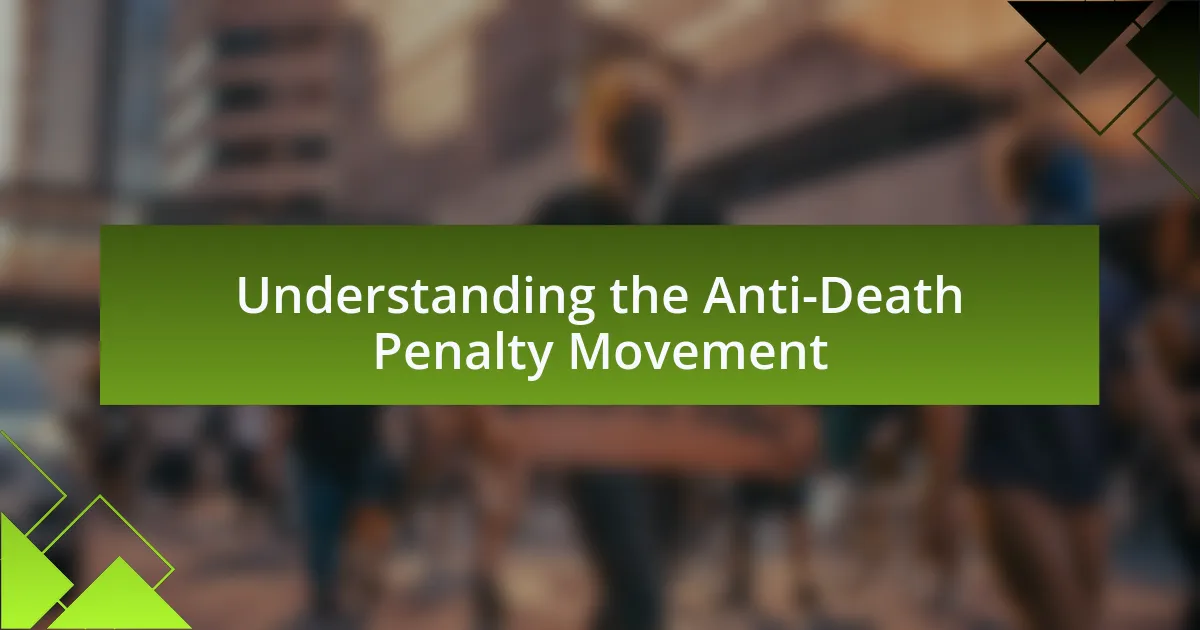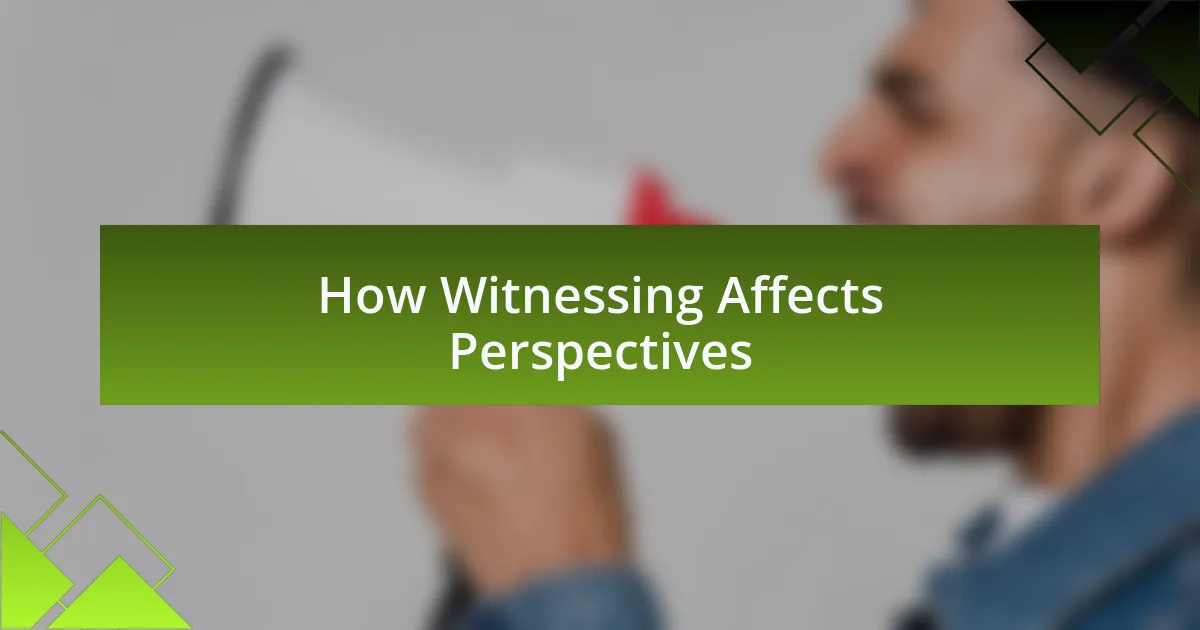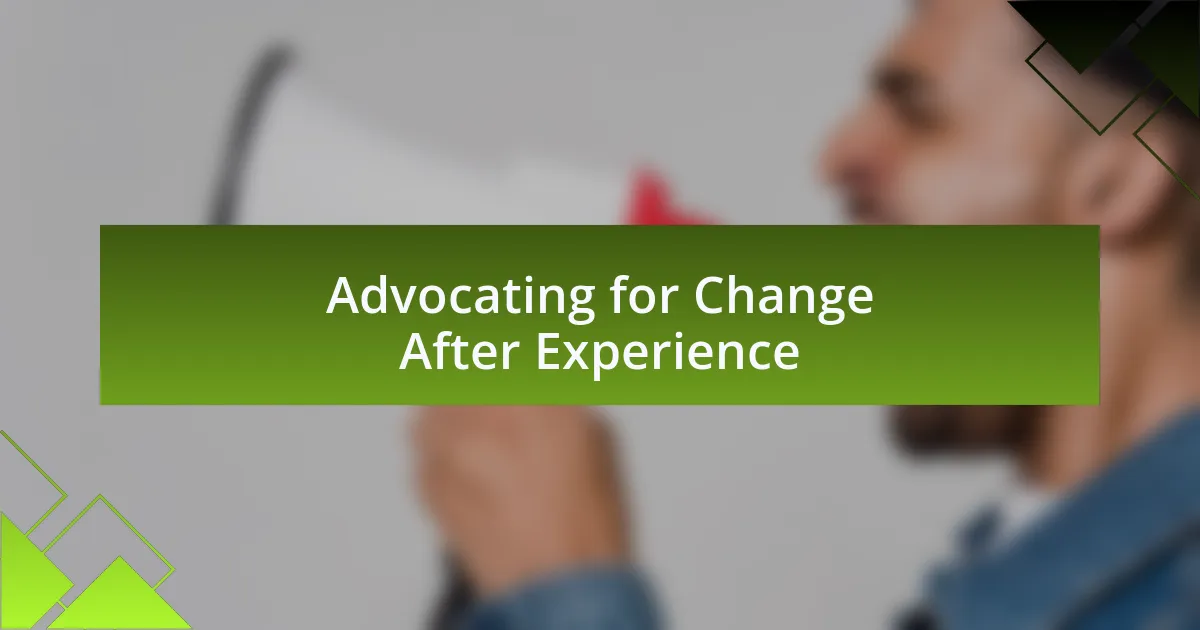Key takeaways:
- The anti-death penalty movement emphasizes the inherent value of human life and highlights the risks of wrongful convictions.
- Statistical disparities reveal that marginalized communities, particularly people of color, are disproportionately affected by capital punishment.
- Witnessing a trial provides a personal understanding of the emotional toll on all parties, reinforcing the need for dialogue about justice and reform.
- Advocacy for change is strengthened by sharing personal experiences and building community among those affected by the judicial system.

Understanding the Anti-Death Penalty Movement
The anti-death penalty movement is rooted in a profound belief in the inherent value of every human life. I remember a time when I spoke to a former inmate who had faced a death sentence but was ultimately exonerated. Hearing his story, I was struck by the realization that our judicial system is not infallible; how many innocent lives might have been lost forever?
One of the compelling arguments against the death penalty involves its disproportionate impact on marginalized communities. During my research, I encountered statistics that revealed a stark reality: people of color are more likely to receive death sentences than their white counterparts. This disparity raises an unsettling question: how can we support a system that perpetuates such inequality and injustice in its most extreme form?
Additionally, the financial burden of the death penalty is often overlooked in these discussions. I came across a detailed report showing that pursuing capital punishment can cost states significantly more than life imprisonment. When we consider the allocation of taxpayer dollars, shouldn’t we question whether those resources are better spent on rehabilitation, education, or mental health services?

History of the Death Penalty
The history of the death penalty stretches back thousands of years, with its roots embedded in ancient civilizations. For instance, the Code of Hammurabi, dating to around 1754 BC, prescribed death as a punishment for a range of offenses. When I learned about these early legal systems, I couldn’t help but reflect on how the very concept of justice has evolved—or arguably, devolved—in our society today.
Fast forward to the 18th and 19th centuries, and the death penalty became a contentious issue in many parts of the world. Some countries began to abolish it altogether, viewing it as brutal and unnecessary. I remember reading about the debates in England during this period, and I was moved by the voices of reformers who argued passionately for change, feeling an emotional connection to their pursuit of a more humane justice system.
In the 20th century, attitudes towards capital punishment continued to shift, especially as awareness of wrongful convictions increased. The stories of innocent individuals facing execution struck a deep chord within me, raising the question: how can we justify a system that risks taking an innocent life? These ideas compelled many to advocate against the death penalty, sparking movements and conversations that persist to this day, reminding us that the struggle for justice is ongoing.

Arguments Against the Death Penalty
While many view the death penalty as a fitting punishment for the most heinous crimes, I’ve seen firsthand how it can lead to irreversible mistakes. Hearing about cases where innocent people were sentenced to death made me wonder how we can trust a system that can be so profoundly flawed. The weight of a single wrongful execution is, in my opinion, a price far too steep for society to bear.
Moreover, the death penalty does not deter crime as effectively as proponents claim. Studies have shown that states with capital punishment don’t necessarily see lower murder rates compared to those without it. Personally, this revelation forced me to question: if the aim is to protect society, why is a retributive approach still considered the best option?
Another pressing concern is the disproportionate impact of the death penalty on marginalized communities. I remember grappling with the statistics that reveal how race and socioeconomic status play a significant role in who gets sentenced to death. It stirred a deep sense of injustice within me. How can we claim to uphold fairness in our legal system when biases so blatantly influence life-and-death decisions?

Key Takeaways from the Experience
Witnessing the trial opened my eyes to the human stories behind abstract legal arguments. I remember watching a defendant’s family in tears, their anguish palpable as they faced what could be a life-ending verdict. This personal loss drove home the idea that every case is not merely about crime and punishment; it’s about real people with families who will feel the consequences long after the gavel falls.
One of the most striking realizations from this experience was how the legal system often overlooks the mental toll on all parties involved. I recall the tense silence in the courtroom as witnesses were called to testify, each voice trembling with fear or anger. It’s a grim reminder that the courtroom drama isn’t just a spectacle; it affects the emotional and psychological well-being of everyone involved. How can we justify a system that inflicts such strain when alternatives are available?
Speaking with other observers after the trial reinforced my belief that dialogue is essential for change. Many expressed their concerns about fairness and the ethical implications of capital punishment. Their perspectives underscored the idea that we need open conversations about justice and morality. Isn’t it imperative that we listen to these voices as we contemplate a fairer and more humane legal approach?

How Witnessing Affects Perspectives
Witnessing the trial deepened my understanding of how proximity to the legal process can transform one’s perspective on justice. I remember sitting just a few rows behind the defendant’s attorney, absorbing the tension in the air. It struck me how different the experience felt from reading about cases in the news; suddenly, the abstract concept of justice became intensely personal.
There was a moment during a recess when I exchanged glances with a juror; her expression was one of weighing heavy choices. This small yet significant interaction highlighted how the burden of a verdict can haunt one’s conscience long after the trial ends. Doesn’t witnessing this firsthand instill a sense of responsibility for all involved in the judicial system?
After the trial concluded, I found myself reflecting on the emotional aftermath—it lingered with me for days. Speaking with others who attended made me realize their feelings mirrored mine: confusion, aggravation, and a desperate hope for reform. Isn’t it crucial to grapple with these emotions in pursuit of a more compassionate approach to justice?

Advocating for Change After Experience
Advocating for change became my mission after witnessing the trial. I vividly recall an afternoon when a mother of a victim sat nearby, tears streaming down her face as she listened to the defense’s arguments. In that moment, I realized that beyond the legal jargon, there were real people—real lives—impacted by each verdict. Wouldn’t it be better if the system prioritized healing over punishment?
One day, I found myself discussing the trial with a close friend who had been indifferent to issues like the death penalty. I shared my experience, emphasizing how witnessing the complexities of justice transformed my views on life and death decisions. The conversation was enlightening; I could see the gears turning in their mind as they began to reconsider their stance. Isn’t it fascinating how personal stories can ignite awareness and spark action in others?
As I engaged with various advocacy groups after the trial, I discovered the power of collective voices. I participated in a panel where survivors shared their stories, and it was profoundly moving. The overwhelming sense of community and shared purpose reaffirmed my belief in reforming our justice system. Can you imagine how much stronger our impact can be when we unite our experiences for a common cause?